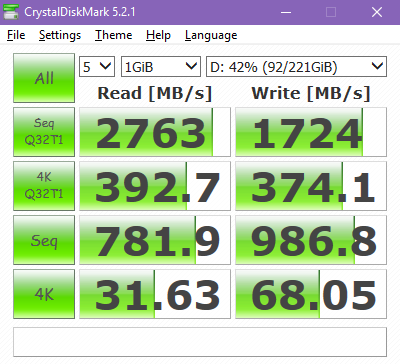

I could resize the desktop with either xrandr commands or the GUI Display preferences, and the changes would stick even after restarts. Then I changed the video hardware to Virtio, and the problem went away. If video was set to VGA or QXL, I could not resize the guest. Create the flash images with the correct sizes.
#QEMU VGA VIRTIO WIN10 INSTALL#
Note: not Display, but a separate entry further down in the left-hand-side Hardware list in virt-manager. To launch an aarch64 VM we first need to install a few dependencies, including QEMU and the qemu-efi-aarch64 package, which includes the efi firmware. The fix for me was in the virtual hardware Video settings.
#QEMU VGA VIRTIO WIN10 DRIVER#
The tutorial uses a technology called VGA passthrough (also referred to as GPU passthrough or vfio for the vfio driver used) which provides near-native graphics performance in the VM.
#QEMU VGA VIRTIO WIN10 HOW TO#
No matter what I set virt-manager's View -> Scale to display menu options to, this still happened. QEMU virtio-vga-gl display device This item contains old versions of the Arch Linux package for qemu-hw-display-virtio-vga-gl. In the tutorial below I describe how to install and run Windows 10 as a KVM virtual machine on a Linux Mint or Ubuntu host.

Then, clunk, it would change right back.Įxplicitly setting a higher level VGA video memory did not work (although it did help for another problem long ago). xrandr in the guest showed lots of higher resolutions available, but when I tried to set the resolution to 1920x1080 - whether with xrandr -output Virtual-1 -mode 1920x1080 or with Plasma's Display setting - it would only momentarily change to the higher resolution. My virt-manager version is 2.2.1.Īs with thorsummoner's original situation above I am using Display Spice so I can have goodies like the shared clipboard between host and guest. In my case, I have a Fedora 32 (KDE Spin) Linux host and the same OS in the guest. I ran into this problem in May 2020 and while the older answers here were of some help I thought I'd add some clarifications since the virt-manager UI and libvirt capabilities continuously evolve. Longer background in case it's useful to future visitors: When I changed Video to Virtio in virt-manager and restarted the VM, it worked. Before installing click again on Load driver and load the VirtIO network driver. Create a system.vhdx that's around 23GB or larger (fixed size. Download my hand-crafted UEFI firmware and recompiled/signed arm64 storage drivers. Now you should see the volume you’ve created and be able to install windows on it. Download the Windows 10 (arm64) ESDs from adguard's whizzbang download page and glue them together using UUPtoISO ( patched for arm64) to create a usable ISO. The 'backend' is the part that does the actual job (network, block device, random-number generator, etc) the 'transport' is the part that is the interface to the guest (PCI, MMIO, s390 CCW.). If the VM's virtual Video hardware was set to VGA or QXL, I could not resize the desktop in the guest. It is located in VirtIO drive/viostor/w10/amd64. Conceptually, virtio devices in QEMUs implementation come in two parts: the 'transport' and the 'backend'.


 0 kommentar(er)
0 kommentar(er)
